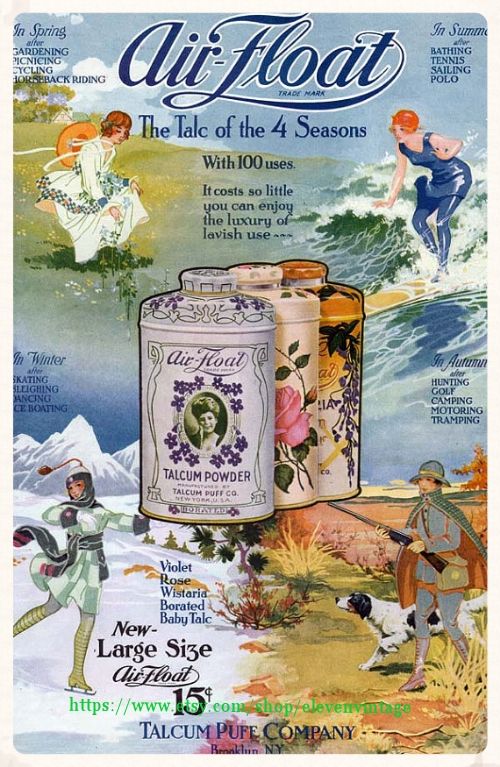What is talc?
Talc is a mineral that absorbs moisture and protects skin from friction. As you can see from the advertisement above, women have been using talc in the form of talcum powder for years. However, talcum powder is mostly commonly referred to today as "baby powder." Prior to the 1970's, naturally occurring talc, ground into powder form, contained asbestos. Although asbestos is banned these days, in a 2013 lawsuit, it was alleged that studies showed that even asbestos-free talcum powder had the potential to cause ovarian cancer.Where is talc?
Most dusting powders for adults or baby powders for infants contain talcum powder as the main (sometimes only) ingredient. Talc is also a filler in certain eye shadows, face powders, foundations, blush and bronzers, etc. You should check any powder based cosmetics ingredients list to see if talc is included.Is talc really a threat?
The American Cancer Society summed up some of the research that has been going on in relation to the link between cancer and talcum powder. So far the research has been focused on use of talcum powder in the genital area and the findings are mixed. Some research suggested an increased risk to women of as much as 30%, and the International Agency for Research on Cancer, which is part of the World Health Organization, has declared asbestos-free talc to be "possibly carcinogenic" to humans.How to avoid talc?
I'm no scientist and I don't intend to dictate whether or not people should avoid talcum powder entirely, but it is worth further research and consideration by we the consumers. If, like me, you prefer to err on the side of caution, check the ingredients in any and all cosmetics you purchase. If the ingredients aren't listed on the packaging, you may be able to find that information online on the manufacturer's website(s). Just because a product is cruelty-free does not mean it is talc-free. Luckily, due to the attention talc is getting these days, many makeup companies proudly declare if/when their products are talc-free.At the end of the day it is up to the savvy consumer to do his or her homework before making a purchase. The research on talc is still in its infancy but it is my personal belief that it is an unnecessary "filler" and there are many wonderful brands that don't use it. Hopefully you find this information useful and it leads you to further research.

No comments:
Post a Comment